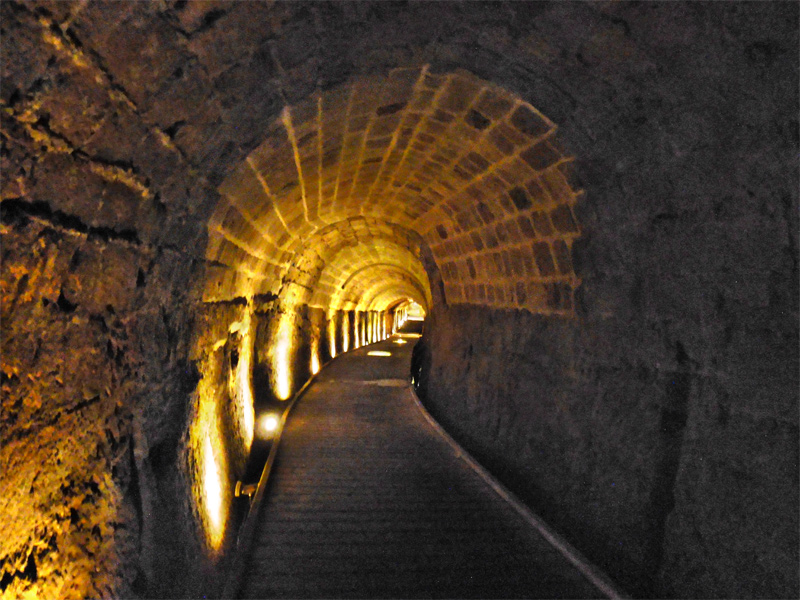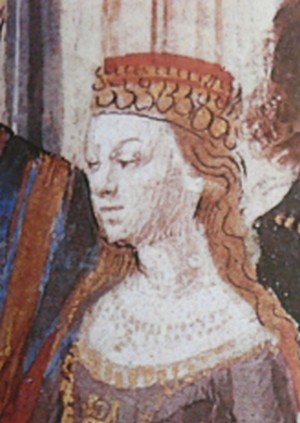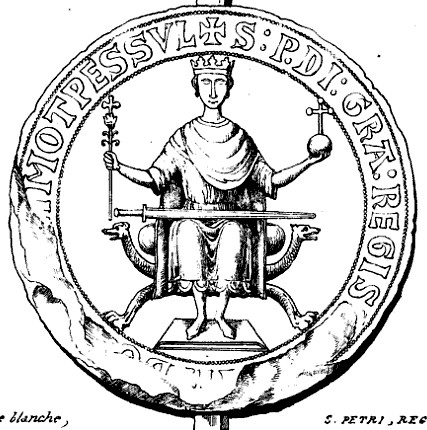|
Maria Of Montferrat
Maria of Montferrat (1192–1212) was the queen of Jerusalem from 1205 until her death. She was the daughter of Isabella I of Jerusalem and her second husband, Conrad of Montferrat. Maria succeeded her mother under the regency of her half-uncle John, Old Lord of Beirut, John of Ibelin. In 1210 Maria married John of Brienne and the two became co-rulers of Jerusalem. She died giving birth to her successor, Isabella II of Jerusalem, Isabella II. Childhood Maria was born in 1192 in Tyre, Lebanon, Tyre to Queen Isabella I of Jerusalem. She was named after her maternal grandmother, Maria Komnene, Queen of Jerusalem, Maria Komnene. Maria's father was Isabella's second husband, Marquis Conrad of Montferrat, and Maria was known as ''La Marquise'' after him. Conrad was assassinated on 28 April 1192. Isabella was pregnant at the time, but Maria may have been born before her father's death. Within a week of Conrad's death, Isabella married Count Henry II of Champagne, who had had some misgivi ... [...More Info...] [...Related Items...] OR: [Wikipedia] [Google] [Baidu] |
Sibylla Of Cyprus
Sibylla of Lusignan (or Sibylle de Lusignan) (October/November 1198 – c. 1230 or 1252) was a queen consort of Armenia. She was the daughter of King Aimery of Cyprus and Queen Isabella I of Jerusalem. She was a member of the House of Lusignan The House of Lusignan ( ; ) was a royal house of France, French origin, which at various times ruled several principalities in Europe and the Levant, including the kingdoms of Kingdom of Jerusalem, Jerusalem, Kingdom of Cyprus, Cyprus, and Kingd .... She was the second wife of King Leo I, King of Armenia, Leo I of Armenia, married in 1210, by whom she had one daughter, Queen Isabella of Armenia, Isabella. Notes References * Armenian people of Cypriot descent Women from the Crusader states Queens consort of Armenia House of Lusignan 1198 births 13th-century deaths 13th-century Cypriot people Daughters of kings Daughters of queens regnant {{Europe-royal-stub ... [...More Info...] [...Related Items...] OR: [Wikipedia] [Google] [Baidu] |
Latin Patriarch Of Jerusalem
The Latin Patriarchate of Jerusalem () is the Latin Catholic ecclesiastical patriarchate in Jerusalem, officially seated in the Church of the Holy Sepulchre. The Latin Patriarch of Jerusalem is the archbishop of Latin Church Catholics of the Archdiocese of Jerusalem with jurisdiction for all Latin Catholics in Israel, Palestine, Jordan and Cyprus; he also holds the office of grand prior of the Order of the Holy Sepulchre. It is exempt, being directly subject to the Holy See (and exceptionally its Dicastery for the Eastern Churches, which normally handles Eastern Catholics). It is not within an ecclesiastical province, and has no metropolitan functions. The Patriarchate was originally established in 1099, with the Kingdom of Jerusalem encompassing the territories in the Holy Land newly conquered by the First Crusade. From 1374 to 1847 it was a titular see, with the patriarchs of Jerusalem being based at the Basilica di San Lorenzo fuori le Mura in Rome. Pope Pius IX r ... [...More Info...] [...Related Items...] OR: [Wikipedia] [Google] [Baidu] |
Acre, Israel
Acre ( ), known in Hebrew as Akko (, ) and in Arabic as Akka (, ), is a List of cities in Israel, city in the coastal plain region of the Northern District (Israel), Northern District of Israel. The city occupies a strategic location, sitting in a natural harbour at the extremity of Haifa Bay on the coast of the Mediterranean's Levantine Sea. In the Village Statistics, 1945, 1945 census Acre's population numbered 12,360; 9,890 Muslims, 2,330 Christians, 50 Jews and 90 classified as "other".Department of Statistics, 1945, p4Government of Palestine, Department of Statistics. ''Village Statistics, April, 1945.'' Quoted in Hadawi, 1970, p40 Acre Prison, Acre's fort was converted into a jail, where members of the Jewish underground were held during their struggle against the Mandate authorities, among them Ze'ev Jabotinsky, Shlomo Ben-Yosef, and Dov Gruner. Gruner and Ben-Yosef were executed there. Other Jewish inmates were freed by members of the Irgun, who Acre Prison break, brok ... [...More Info...] [...Related Items...] OR: [Wikipedia] [Google] [Baidu] |
Philip II Of France
Philip II (21 August 1165 – 14 July 1223), also known as Philip Augustus (), was King of France from 1180 to 1223. His predecessors had been known as kings of the Franks (Latin: ''rex Francorum''), but from 1190 onward, Philip became the first French monarch to style himself "King of France" (''rex Francie''). The son of King Louis VII and his third wife, Adela of Champagne, he was originally nicknamed () because he was a first son and born late in his father's life. Philip was given the epithet "Augustus" by the chronicler Rigord for having extended the crown lands of France so remarkably. After decades of conflicts with the House of Plantagenet, Philip succeeded in putting an end to the Angevin Empire by defeating a coalition of his rivals at the Battle of Bouvines in 1214. This victory would have a lasting impact on western European politics: the authority of the French king became unchallenged, while John, King of England, was forced by his barons to assent to Magna C ... [...More Info...] [...Related Items...] OR: [Wikipedia] [Google] [Baidu] |
Lord Of Caesarea
The Kingdom of Jerusalem, one of the Crusader states that was created in 1099, was divided into a number of smaller Manorialism, seigneuries. According to the 13th-century jurist John of Ibelin (jurist), John of Ibelin, the four highest crown vassals (referred to as barons) in the kingdom proper were the count of Jaffa and Ascalon, the prince of Galilee, the lord of Sidon, and the lord of Oultrejordain. There were also a number of independent seigneuries, and some land held under direct royal control, such as Jerusalem itself, Acre, Israel, Acre and Tyre (Lebanon), Tyre. Northern states Aside from the Kingdom of Jerusalem, there were also three other major Crusader states in the Near East: * County of Edessa * County of Tripoli * Principality of Antioch These states nominally bore some dependency on the kingdom of Jerusalem. The king of Jerusalem was bound to reconcile them in case of disputes, or between a vassal prince and the Latin patriarch of Antioch, and could claim the ... [...More Info...] [...Related Items...] OR: [Wikipedia] [Google] [Baidu] |
Aymar De Lairon
Aymar de Lairon (died 1219), also Adeymar, Adémar or Aimerich, was the lord of Caesarea in right of his wife from at least 1193 until her death between 1213 and 1216. During this period he was a prominent figure in the Kingdom of Jerusalem. As a widower he became the marshal of the Knights Hospitaller until his own death in battle. Lord of Caesarea Aymar witnessed a charter of Count Henry II of Champagne, husband of Queen Isabella I of Jerusalem, in 1193, subscribing as ''Azemarus Cesariensis dominus'' ("Aymar, Caesarean lord").John L. LaMonte, "The Lords of Caesarea in the Period of the Crusades", ''Speculum'' 22, 2 (1947): 153–54. He subscribed a second royal act with the same title the next year (1194). The wife in whose right he held the title, Juliana, is not herself recorded as the lady of Caesarea until 1197, when together they confirmed a grant made by her brother, Walter II, on his deathbed. Between 1201 and 1213 he and his wife jointly issued a number of charters. Ay ... [...More Info...] [...Related Items...] OR: [Wikipedia] [Google] [Baidu] |
Bishop Of Acre
The bishop of Acre was a suffragan bishop of the archbishop of Tyre in the medieval Latin Kingdom of Jerusalem. Acre is present-day Akko, Israel. History The introduction of Christianity to Ptolemais, as Acre was known in ancient times, dates back to Apostolic times. The Apostle Paul, returning from his trip to Macedonia, in Achaea and Asia, landed at Tyre, and from there traveled to Ptolemais, where he stayed some days with the local Christian community (acts 21.7). The first bishop known is Clarus, who in 190 attended a Council meeting of some bishops of Phoenicia and Palestine to deal with the issue of the date of the Paschal feast. But we must go to the fourth century to find the next bishop, Aeneas, who took part at the First Council of Nicaea in 325 and at the Synod held in Antioch in 341. Nectabo was one of the fathers of the first Ecumenical Council of Constantinople in 381. Between the 4th and 5th centuries lived bishop Antiochus Antiochus (Ancient Greek: Ἀντί� ... [...More Info...] [...Related Items...] OR: [Wikipedia] [Google] [Baidu] |
Florent (archbishop Of Arles)
Florent is a French version of the Latin personal name Florentius. It is also used as a surname. People with the first name * Florent Amodio (born 1990), French figure skater * Florent Avdyli (born 1993), Kosovan footballer * Florent Aziri (born 1988), Kosovan-German footballer * Florent Hadergjonaj (born 1994), Kosovan footballer * Florent Hasani (born 1997), Kosovan footballer * Florent Hoti (born 2000), Kosovan-British footballer * Florent Lambrechts (1910–1990), Belgian footballer * Florent Malouda (born 1980), French footballer and coach * Florent Manaudou (born 1990), French competitive swimmer, an Olympic champion of the 50-meter freestyle at the 2012 London Olympics, and the younger brother of Laure Manaudou * Florent Mothe (born 1981), French musician, singer, and actor * Florent Muslija (born 1998), Kosovan footballer *Florent Pagny (born 1961), French recording artist and singer *Florent Schmitt (1870–1958), French composer *Florent Sinama Pongolle (born 1984), Fren ... [...More Info...] [...Related Items...] OR: [Wikipedia] [Google] [Baidu] |
Peter II Of Aragon
Peter II the Catholic (; ) (July 1178 – 12 September 1213) was the King of Aragon and Count of Barcelona from 1196 to 1213. Background Peter was born in Huesca, the son of Alfonso II of Aragon and Sancha of Castile, Queen of Aragon, Sancha of Castile. In 1205 he acknowledged the feudal supremacy of the papacy and was crowned in Rome by Pope Innocent III, swearing to defend the Catholic Church, Catholic faith (hence his epithet, "the Catholic"). He was the first king of Aragon to be crowned by the pope. In the first decade of the thirteenth century Peter commissioned the ''Liber feudorum Ceritaniae'', an Illustrated manuscript, illustrated codex cartulary for the counties of County of Cerdagne, Cerdagne, County of Conflent, Conflent, and County of Roussillon, Roussillon. Marriage On 15 June 1204 Peter married (as her third husband) Marie of Montpellier, daughter and heiress of William VIII of Montpellier by Eudokia Komnene, wife of William VIII of Montpellier, Eudocia Comne ... [...More Info...] [...Related Items...] OR: [Wikipedia] [Google] [Baidu] |
Fief
A fief (; ) was a central element in medieval contracts based on feudal law. It consisted of a form of property holding or other rights granted by an overlord to a vassal, who held it in fealty or "in fee" in return for a form of feudal allegiance, services or payments. The fees were often lands, land revenue or revenue-producing real property like a watermill, held in feudal land tenure: these are typically known as fiefs or fiefdoms. However, not only land but anything of value could be held in fee, including governmental office, rights of exploitation such as hunting, fishing or felling trees, monopolies in trade, money rents and tax farms. There never existed a standard feudal system, nor did there exist only one type of fief. Over the ages, depending on the region, there was a broad variety of customs using the same basic legal principles in many variations. Terminology In ancient Rome, a " benefice" (from the Latin noun , meaning "benefit") was a gift of land () f ... [...More Info...] [...Related Items...] OR: [Wikipedia] [Google] [Baidu] |
Lordship Of Beirut
The Lordship of Beirut was a feudal seigneury in the Kingdom of Jerusalem centered on the city of Beirut (in modern-day Lebanon). The lord of Beirut was one of the most powerful vassals of the king of Jerusalem. In the 12th century the lordship was ruled by the Brisebarre family. At some point between 1165 and 1174, Beirut was taken back into the royal domain. Count Raymond III of Tripoli held it in 1185-86, and in 1187 it was conquered by the Ayyubids. It was recovered in 1197, and in the 13th century the lordship was held by the Ibelin family. History First kingdom The city of Beirut was captured by the Franks and annexed to the Kingdom of Jerusalem in 1110. King Baldwin I granted it to his distant relative Fulk of Guînes. By 1125, Fulk had died, and Beirut had been given to Walter I Brisebarre. The origin of the Brisebarre family is unknown: their name does not refer to any place and no relationship with the counts of Guînes is known. Beirut owed 21 knights to the crown, m ... [...More Info...] [...Related Items...] OR: [Wikipedia] [Google] [Baidu] |




